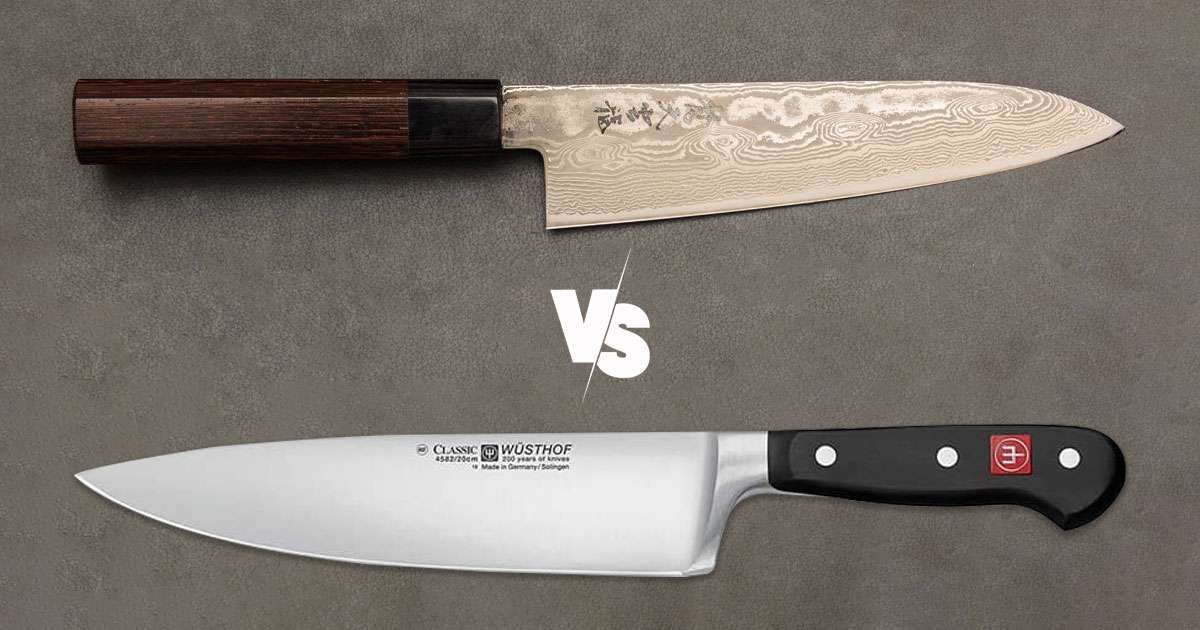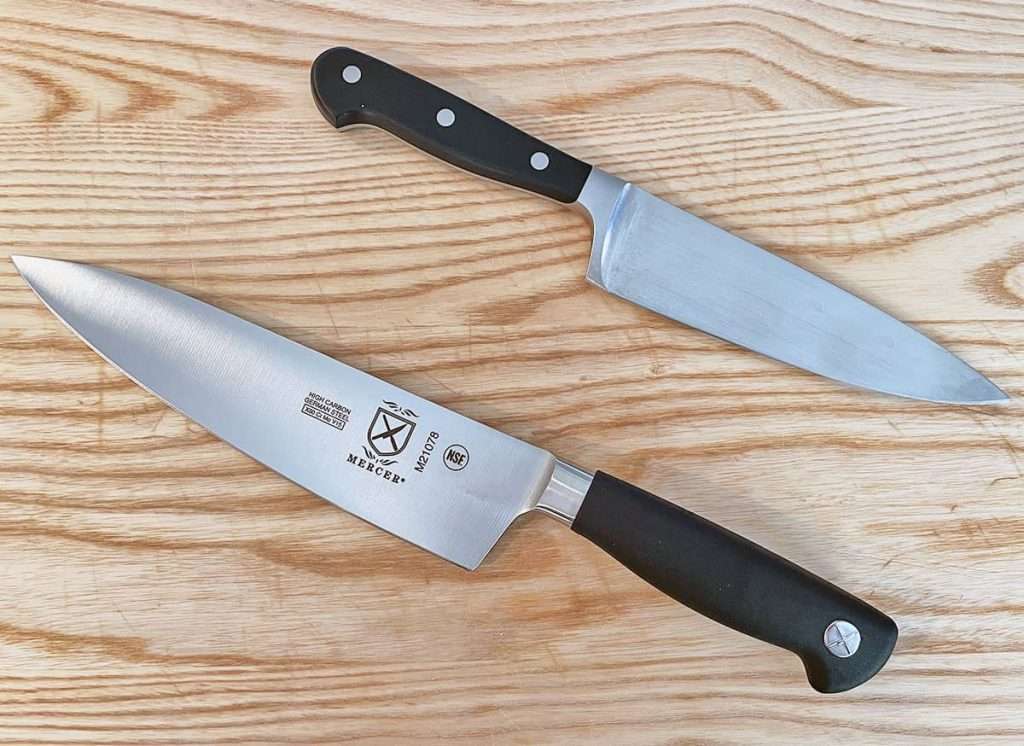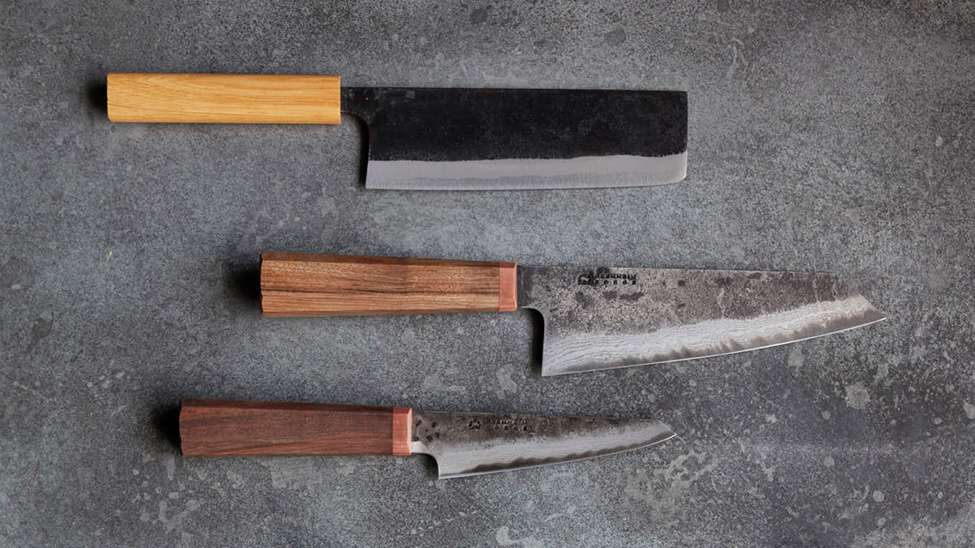Japanese vs. German Knives: How They Differ in Cutting Techniques

Every kitchen knife has a specific job. For example, paring knives and boning knives do different things, just like bread knives and steak knives. Besides its shape, what the knife is made of also determines how it should be used. Most knives are either German or Japanese knives. The main differences between Japanese and German knives are the hardness of the steel and the sharpness of the blade’s edge. These differences affect how long the knives last and what they’re best used for. But when choosing a kitchen knife, the one that lasts the longest isn’t always the best choice.
Which is the Best Choice? German or Japanese Knives?
Looking for a good kitchen knife? With so many shapes and sizes out there, picking the right one can be tricky. But, it’s crucial for any chef to aim for perfectly prepared dishes.
The main choices are German and Japanese knives, and both have their fans. Before choosing, it’s important to understand their differences, as the wrong knife might not meet your needs.
A good knife is key in the kitchen, helping you:
- Keep food textures right and avoid bruising, which can alter flavor.
- Cut food evenly, preventing uneven cooking.
- Work efficiently and safely.
That’s why understanding the pros and cons of Japanese and German knives is essential. This knowledge will help you make a smart choice.
German vs. Japanese Knives Differences
When it comes to culinary tools, the choice of knife can profoundly influence your cooking experience and outcomes. Two of the most renowned types of knives originate from Germany and Japan, each boasting unique characteristics and advantages tailored to different cutting techniques and food preparation styles.
Below are some of their distinctions:
Steel
Steel is a mix of iron and carbon. The more carbon in the steel, the harder it is, but it also becomes less durable. Japanese steel blades have more carbon than German blades, which makes them harder but also more likely to break. On the other hand, German steel is softer, so its sharp edge lasts longer and it doesn’t need sharpening as often as Japanese blades.

Cutting Edge
Japanese knife blades are thinner and sharper than German ones, usually with an edge angle of about 15–16 degrees, while German knives have a 20-degree angle. German blades are often machine-finished, but Japanese blades are usually sharpened and refined by hand. The edge of German blades curves to help with rocking cuts, but Japanese blades are straighter, making them better for precise, clean slicing.
Construction
Most German knives are made with a full-tang design, where the steel extends all the way from the blade to the end of the handle in one piece. Japanese knives, on the other hand, have blades that get narrower as they go into the handle, making the knife lighter and easier to handle, especially for precise cuts.
Function
Japanese knives are ideal for delicate slicing and precise cutting because they have thinner blades and require careful handling. German knives, on the other hand, are heavier and thicker with a rounded belly, making them great all-purpose tools. They’re especially good for tough jobs like cutting through joints and bones. Each type has its own specialties based on its design and build.

Blade Angle
German knives typically have a blade angle of about 17.5 degrees, making them less sharp but stronger and more robust, which is ideal for cutting through tough items. In contrast, Japanese knives have sharper angles ranging from 10 to 15 degrees on each side, allowing for more precise and cleaner cuts without damaging the food. This makes Japanese knives better for precision tasks, whereas German knives excel at handling tougher cutting jobs.
Design
German knives typically feature a full-tang design, meaning the metal blade extends from the tip all the way to the end of the handle, and they have a bolster—the thick part of the blade near the handle—which adds strength, making them great for chopping tough vegetables. In contrast, Japanese knives often lack a bolster, and the tang can vary depending on the maker, resulting in a lighter and more versatile knife.
Hardness
The Rockwell scale measures steel hardness, with Japanese knives typically scoring between 60 and 63 and German knives around 57. While a higher score means the knife can keep its sharp edge longer, it also makes it more fragile, prone to chipping or breaking if not handled carefully. On the other hand, knives with a lower Rockwell score, like German knives, are tougher and can withstand more wear and tear but need to be sharpened more frequently.
Choose the Best Cutting Companion
Ready to elevate your cooking game? Explore the differences between Japanese and German knives to find the perfect tool for your kitchen. Whether you crave precision slicing or sturdy versatility, understanding these distinctions will guide you towards culinary mastery. Dive in and choose wisely for dishes that dazzle every time!

